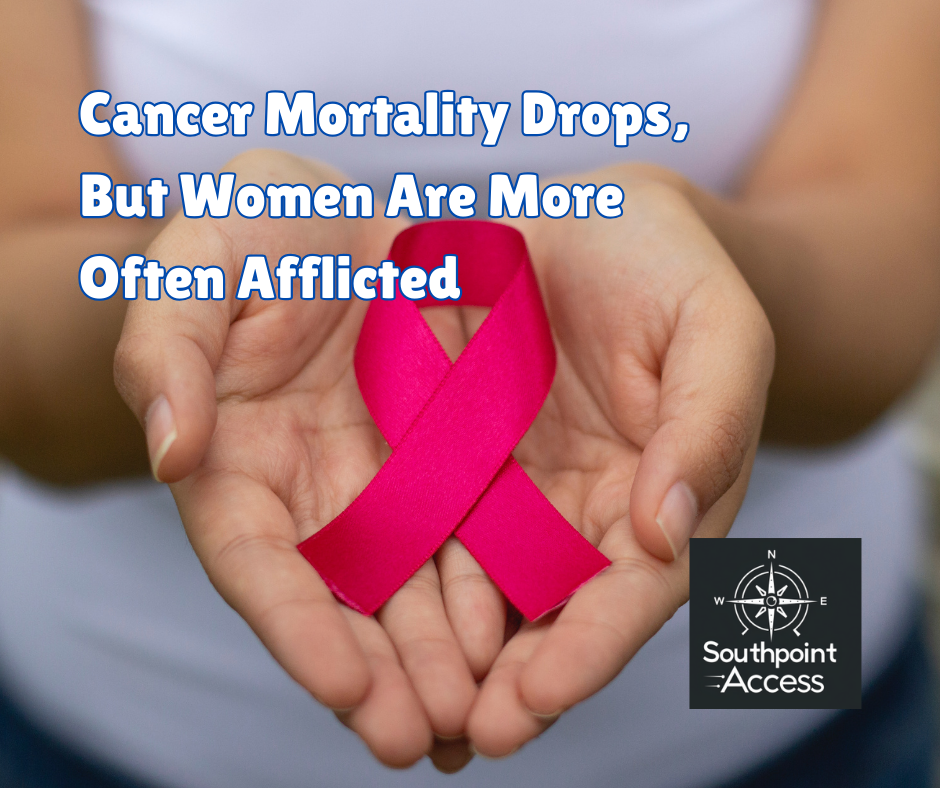Cancer Death Rates Decline, But Cases Rise Among Women, ACS Warns
Notably, lung cancer rates among women younger than 65 have exceeded those in men, and other cancers such as breast, uterine, and oral cavity are also on the rise in women.

The fight against cancer has made remarkable strides, with U.S. cancer mortality rates dropping by 34% since 1991, saving an estimated 4.5 million lives, according to the American Cancer Society’s (ACS) Cancer Statistics, 2025. However, the annual report also reveals a concerning trend: cancer incidence rates are rising sharply among women, particularly those under 50, threatening to shift the disease burden.
“Continued reductions in cancer mortality because of drops in smoking, better treatment, and earlier detection is certainly great news,” said Rebecca Siegel, senior scientific director of surveillance research at ACS. “However, this progress is tempered by rising incidence in young and middle-aged women, who are often the family caregivers, and a shifting cancer burden from men to women.”
Women and Younger Adults Face Rising Incidence Rates
The report highlights that incidence rates in women aged 50-64 have now surpassed those in men, while women under 50 experience cancer at rates 82% higher than their male counterparts, up from 51% in 2002. Notably, lung cancer rates among women younger than 65 have exceeded those in men, and other cancers such as breast, uterine, and oral cavity are also on the rise in women.
This shift in cancer trends “harkens back to the early 1900s when cancer was more common in women,” Siegel said.
Cancer Projections for 2025
The ACS estimates 2,041,910 new cancer diagnoses in 2025, with 618,120 cancer deaths. While overall mortality continues to decline, some cancers, including pancreatic, oral cavity, and uterine cancers, are showing increases in both incidence and death rates. Pancreatic cancer, the third leading cause of cancer deaths, remains a significant concern, with a five-year survival rate of just 8%.
Colorectal cancer is also increasing among adults under 65, highlighting the importance of earlier and more accessible screening programs.
Disparities in Cancer Outcomes
The report underscores glaring inequalities in cancer outcomes across racial and ethnic groups. Native Americans are two to three times more likely to die from kidney, liver, stomach, and cervical cancers than White Americans. Black Americans face higher mortality rates for prostate, uterine, stomach, and cervical cancers, with cervical cancer death rates 50% higher than in White Americans, despite its preventability through vaccination and screening.
“Progress against cancer continues to be hampered by striking, wide static disparities for many racial and ethnic groups,” said Dr. Ahmedin Jemal, senior vice president of surveillance and health equity science at ACS. “It’s essential to help end discrimination and inequality in cancer care for all populations.”
Addressing the Cancer Burden
ACS leaders emphasize the need for expanded investments in cancer prevention, screening, and treatment, particularly for underserved populations. Dr. Wayne A. I. Frederick, interim CEO of ACS, said equitable screening programs are vital. “Expanding access to these services will save countless lives. A concerted effort between healthcare providers, policymakers, and communities needs to be prioritized to assess where and why mortality rates are rising.”
The ACS also highlighted its role as the largest non-government, non-profit funder of cancer research in the U.S., currently supporting over $450 million in grants to advance treatment discoveries.
What This Means for South Durham
For South Durham families, the report serves as both a call to vigilance and a reminder of the importance of early detection. Regular checkups, cancer screenings, and awareness of family history are critical. In addition, residents should advocate for equitable access to healthcare and participate in local outreach programs aimed at reducing disparities in cancer care.
Stay informed about health updates like these and how they impact our community by subscribing to the Southpoint Access newsletter. Together, we can work toward a healthier South Durham.
Spread the word by sharing this Southpoint Access newsletter with friends and neighbors. Got a tip for your neighborhood news guy? Send email to southpointaccessnews@gmail.com.


![[SoDu Alert] Durham Public Schools Closed Dec. 8 Due to Weather](/content/images/size/w600/2025/12/icyweather128.png)
![[WordroW] Candidate Calling](/content/images/size/w600/2025/12/wordrow1.png)
